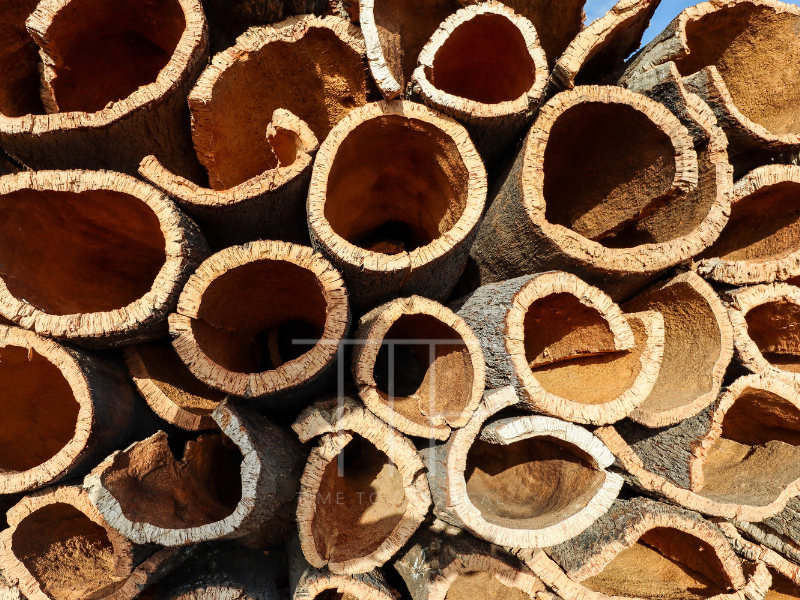December figures are still missing, but it is already certain that cork will exceed the 1212 million of the previous year. In wines, liqueurs are “dragging” the sector into the red.
The year 2023 promises to be the best ever for cork, which is expected to close the year growing at around 3% and approaching 1250 million euros in exports. As for wines, the target of 1 billion will be delayed. In the first 11 months of the year, Portugal sold almost 298.1 million liters worth 860.7 million euros abroad, which corresponds to a year-on-year drop of 1.8% in quantity and 1.4% in value. This performance was very much underpinned by the decline in liqueur wines, whose exports fell by 5% in quantity and 3.4% in value, pressured by losses in Port and Madeira.
In cork, in which Portugal is the world leader, exports grew by 3.1% between January and November (to 1156 million euros), which mainly reflects the “good performance” of the sector in the first quarter of the year, said the president of the Portuguese Cork Association (APCOR), noting that the year started with “strong growth”, of around 8% in the first quarter, but the following two quarters were “very balanced” compared to the same period in 2022.
Closing the year with an increase of around 3% is an “interesting increase” in the face of the “difficult economic climate” the sector has faced, with falling demand due to inflation and rising interest rates, especially in European countries. With cork stoppers accounting for 70 to 75% of cork exports, João Rui Ferreira recalls that “everything that happens in the world of wine has an impact on the sector”. And in this respect, 2024 will bring new challenges since, according to the International Organization of Vine and Wine, world production in the last harvest was the lowest in 60 years.
“Despite everything, we remain optimistic because cork has characteristics and credentials that are aligned with sustainability, the circular economy and climate change, as well as having a high preference rate among consumers and professionals in the sector,” he said.
In Portugal, the 2023 campaign was the biggest since 2006, which is “good news” from a national point of view, he admits, while pointing out that the cork industry is “much more sensitive to the international context”, as it exports most of what it produces.
Wines in decline
With successive records in value sales abroad since 2017, Portuguese wines are going to fall short of expectations. The first quarter closed in line with the previous year, but the 7.5% growth in the second quarter gave some encouragement, which the following months brought down. In the third quarter, the drop was 4.4%, “hiding” the fact that in September, wine exports fell by 13.5%. In October they fell by 6.5% and in November by 12.4%. “We’re seeing a decline in world wine trade and consumption,” says the president of ViniPortugal, the organization responsible for the international promotion of the sector, who points to year-on-year falls in value of 16.7% in Argentina, 21% in Chile and 11% in Australia or 2% in Italy, safeguarding that the data for Chile is from January to November and for Italy up to September.
“Although we’re falling [-1.5%], we’re not doing that badly compared to our competitors on the world market, which means we’re gaining share, but of a market that is shrinking,” says Frederico Falcão. In the top-10 of the main export destinations for Portuguese wines, only Brazil, the Netherlands and Poland grew in both quantity and value. The United Kingdom rose in value, but lost volume. France and the United States, the two biggest buyers of Portuguese wines, bought less in 2023. Rising inflation and higher interest rates are factors behind the downturn in consumption in Europe, but ViniPortugal points out that there is also a certain “stock adjustment” from markets that bought “more than they needed in previous years”.
Certified wines are the only ones to grow, albeit marginally: in the first 11 months of last year, Portugal exported 134.7 million liters of wines with a designation of origin (DO) and geographical indication (GI), worth 404.7 million euros, up 0.2% in volume and 1.5% in value. The average price rose 1.3% to three euros a liter.
In liqueur wines, Portugal exported 51.8 million liters of Port wine up to November, worth 284.4 million euros, corresponding to a drop of 5% in quantity and 3.3% in value. The average price rose 1.8% to 5.49 euros per liter. Exports of Madeira wine fell by 15.4% in volume and 8.8% in value, with exports in the first 11 months of the year standing at 1.89 million liters worth 14.4 million euros. The average price rose 7.8% to 7.65 euros.

